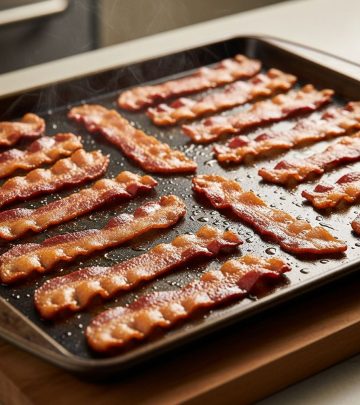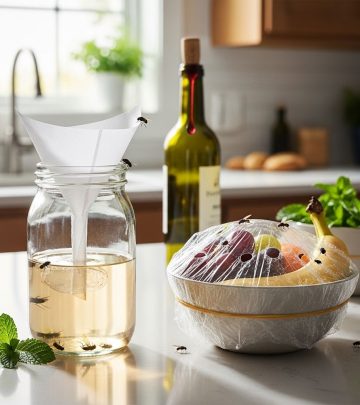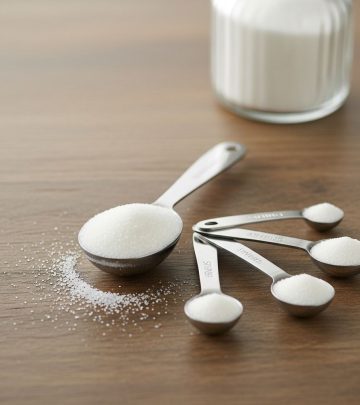How to Make an Espresso Martini: Classic Cocktail Recipe & Expert Tips
Master the art of making a classic espresso martini at home, with expert tips and simple recipes for a perfect shake.

Introduction
The espresso martini is a cocktail that enjoyed a cult following in the 1990s and has surged back into popularity in recent years. Both nostalgic and energizing, it blends the bold flavor of coffee with the smooth kick of vodka, creating a drink that’s as complex as it is irresistible. Although many professional bartenders might grumble when it’s ordered—mostly due to the time and effort required—the espresso martini is, in fact, straightforward to make at home once you know the secret steps.
What Is an Espresso Martini?
The espresso martini is a vodka-based cocktail that combines freshly brewed espresso with coffee liqueur and a hint of sweetness. Its defining characteristic is the rich, frothy layer of foam that tops the drink—a result of the vigorous shaking required during preparation. This delightful blend of caffeine and alcohol has made it a go-to after-dinner drink or a conversation starter at gatherings.
Why Make an Espresso Martini at Home?
While trendy bars and restaurants often feature espresso martinis on their menus, these cocktails can be notoriously time-consuming for bartenders, who must brew and cool espresso on the fly. This can lead to inconsistent experiences depending on where you order. At home, you can ensure that every detail—from the freshness of the espresso to the quality of the vodka—is exact, resulting in a perfect, personalized drink every time.
Classic Espresso Martini Recipe
Here’s how to make the perfect espresso martini in your own kitchen. The recipe below is based on the classic formula, with a few expert-recommended tweaks.
Ingredients
- 2 ounces vodka: A good-quality, neutral vodka is ideal. Some bartenders recommend brands like Tito’s, Absolut, or Belvedere.
- 1/2 ounce coffee liqueur: Kahlúa is the standard, but alternatives like Mr. Black, a refined Australian coffee liqueur, are also excellent.
- 1 ounce freshly brewed espresso: This must be strong and made right before mixing, ideally cooled quickly if you want a frothy top.
- 1/4 ounce simple syrup (optional): Adjust to taste, depending on how sweet you like your martini.
- Ice (for shaking): Plenty of ice ensures a proper chill and that signature foam.
Equipment
- Cocktail shaker (Boston or Cobbler style)
- Fine mesh strainer (double straining is ideal for a silky texture)
- Jiggers or measuring spoons
- Martini glass or coupe
Step-by-Step Instructions
- Chill your glass: Place a martini glass or coupe in the freezer while you prepare the drink.
- Brew the espresso: Pull a fresh shot of espresso. Since you need only one ounce, consider using a stovetop moka pot or a pod espresso machine for this small quantity.
- Cool the espresso (optional): If your espresso is too hot, pour it over a small amount of ice to cool it down rapidly. This helps maintain the cocktail’s structure and foam.
- Combine ingredients: In a cocktail shaker, add vodka, coffee liqueur, cooled espresso, and simple syrup (if using).
- Shake vigorously: Fill the shaker with ice and shake hard for about 15–20 seconds. The goal is to achieve a creamy, aerated foam on the drink’s surface.
- Double strain: Strain the mixture into your chilled glass through a fine mesh sieve to catch any small ice chips.
- Garnish and serve: For classic flair, float three coffee beans on top of the foam as a traditional garnish.
Ingredient Tips & Variations
Every component of an espresso martini can be customized to your taste. Here’s a guide to selecting the best ingredients:
Vodka
Choose a premium, neutral vodka to ensure the coffee flavor shines. Avoid flavored vodkas, as they can overpower the espresso.
Coffee Liqueur
While Kahlúa is the classic choice, artisanal coffee liqueurs like Mr. Black offer a more balanced, less-sweet profile that pairs beautifully with espresso.
Espresso
Freshly brewed is non-negotiable. Instant espresso powder mixed with water is not recommended, as it lacks depth and aroma. If you don’t have an espresso machine, a moka pot or even strongly brewed coffee (in a pinch) will work.
Sweetness
Simple syrup is the most common sweetener, but you can experiment with flavored syrups, or exclude it entirely for a drier, more intense coffee flavor.
Variations
For a caffeinated twist, try adding a dash of hazelnut or chocolate liqueur. Alternatively, swap vodka for rum or tequila for a completely different profile.
Expert Tips from Bartenders
Professional bartenders have shared their secrets for the best espresso martini:
- Shake hard: The key to that thick, creamy foam is vigorous shaking. Don’t skimp on the ice, and shake until the shaker is extremely cold to the touch.
- Freshness matters: Always use freshly brewed espresso—never pre-made coffee or instant powder.
- Double straining: This step is essential for a silky texture and a professional-looking presentation.
- Experiment with ratios: Try adjusting the proportions of vodka, liqueur, and espresso until you find your perfect balance.
Espresso Martini FAQs
Q: Can I use decaf espresso?
Yes, decaf espresso will work if you want to avoid caffeine. The flavor and texture will be similar.
Q: Can I make an espresso martini without an espresso machine?
Yes, a moka pot or a very strong batch of brewed coffee can substitute for espresso. The taste will be slightly different but still enjoyable.
Q: Why doesn’t my espresso martini foam up?
The foam comes from freshly brewed espresso and shaking with ice. If your drink isn’t foamy, make sure you use very fresh, hot espresso and shake hard.
Q: Can I make a batch of espresso martinis for a crowd?
It’s best to make them one at a time to ensure the perfect foam. However, you can pre-brew and chill espresso and mix up a large batch to serve over ice.
History of the Espresso Martini
The espresso martini was invented in the 1980s by London bartender Dick Bradsell, who was asked to invent a cocktail that would “wake me up and f*ck me up” by a patron who later turned out to be a supermodel. Bradsell’s concoction quickly gained a reputation as the ultimate “grown-up dessert,” merging caffeine and alcohol in a stylish, frothy package. Though it faded from the limelight in the 2000s, its recent resurgence has made it a staple of cocktail menus worldwide.
Espresso Martini Serving Suggestions
- For dessert: Serve after dinner with chocolate truffles or tiramisu for a decadent pairing.
- Brunch: Surprise guests with espresso martinis alongside breakfast pastries.
- Cocktail party: Make them with different liqueurs as a fun, creative option.
Popular Espresso Martini Mistakes to Avoid
| Mistake | Why It Happens | How to Fix It |
|---|---|---|
| Using stale or instant coffee | Lack of fresh espresso | Always use freshly brewed espresso |
| Weak foam | Not shaking hard enough or using cold espresso | Shake vigorously and use hot espresso |
| Overly sweet | Too much simple syrup or liqueur | Adjust sweetness to taste |
| Wrong glass | Using a rocks glass instead of a martini glass | Serve in a chilled martini or coupe glass |
Conclusion
The allure of the espresso martini lies in its perfect balance of bitter, sweet, and boozy flavors—all topped off with a luscious foam. While it takes a bit of effort, the reward is a cocktail that impresses every time, whether you’re whipping it up for yourself or a crowd. With attention to detail and a willingness to experiment, you can master this iconic drink and even make it your own. So go ahead, shake up your evening and savor every sip of your homemade espresso martini.












